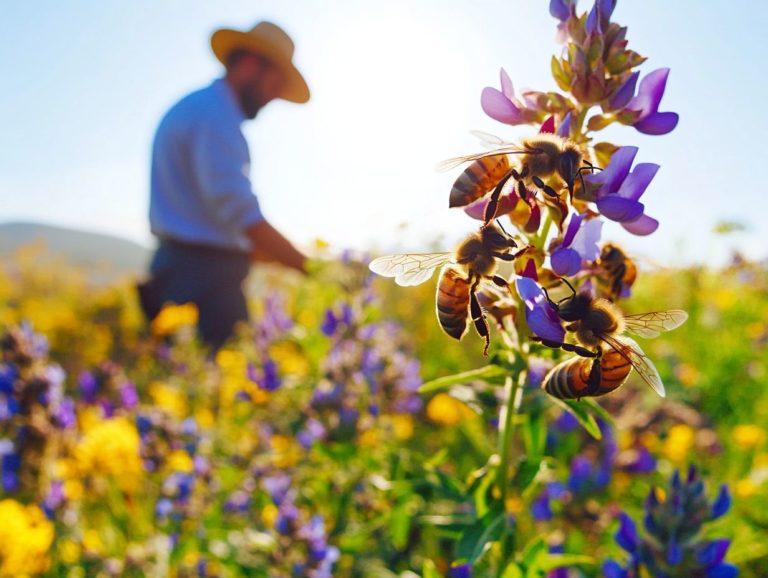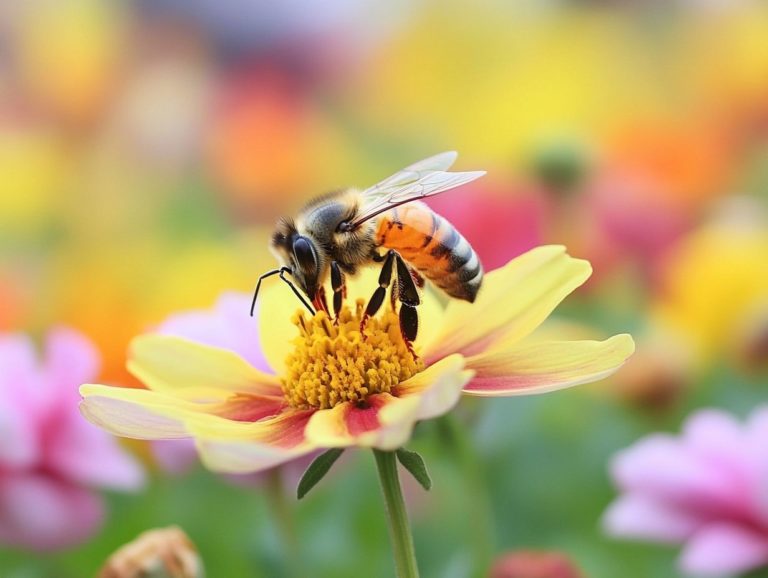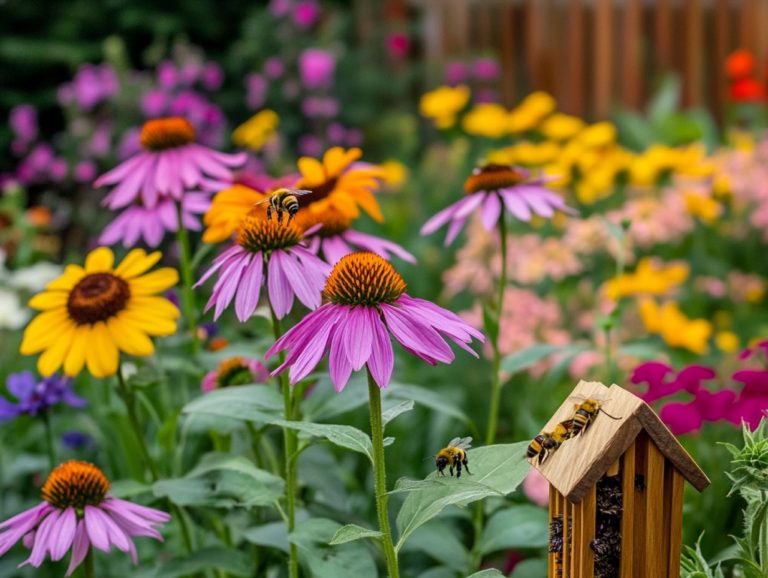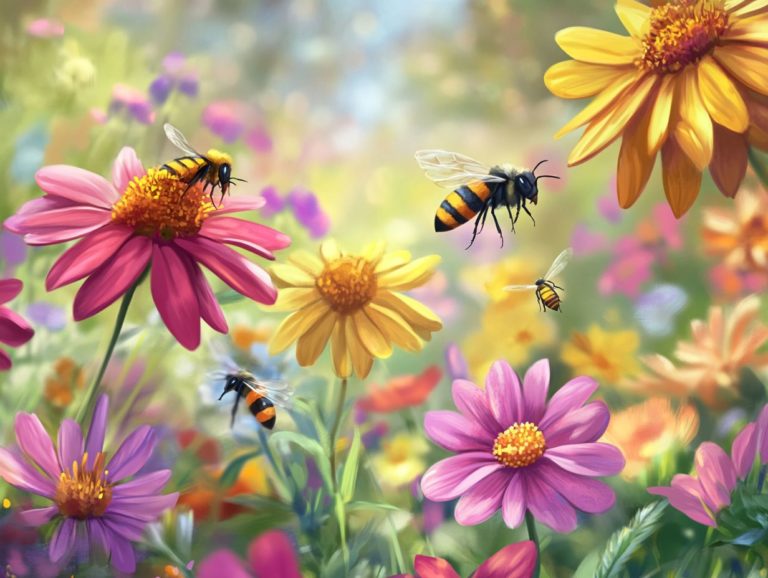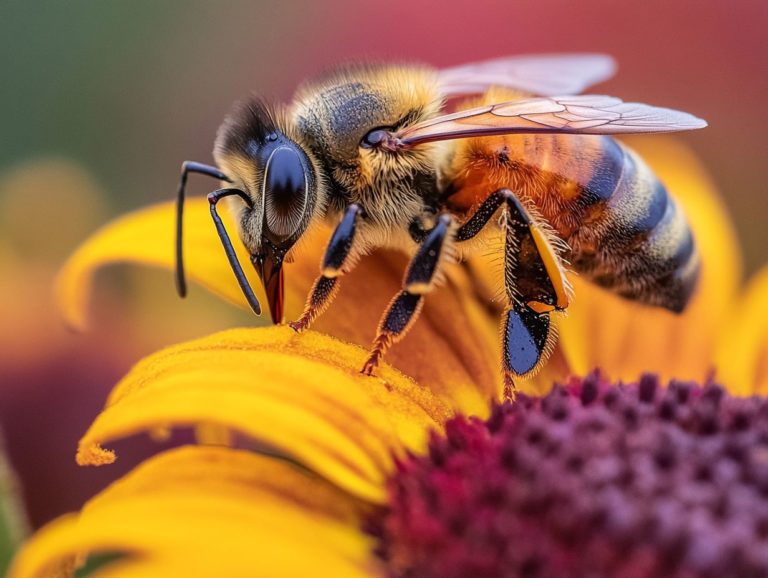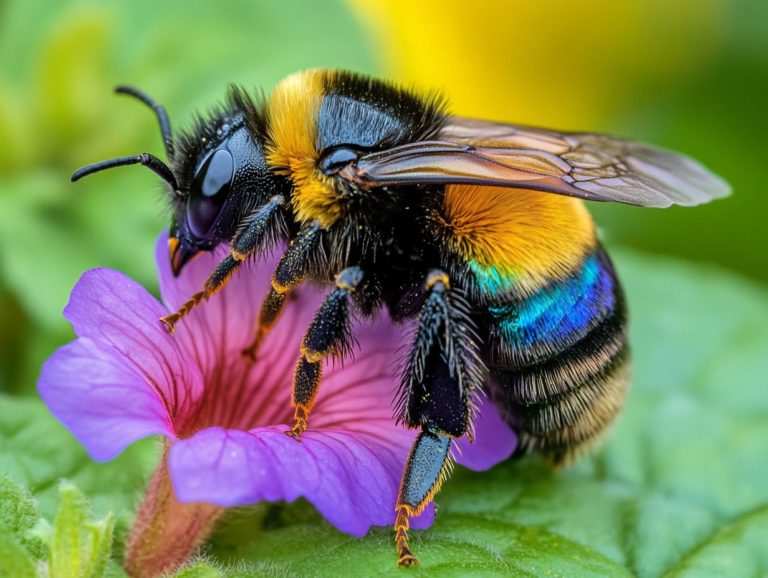5 Bee Species You Didn’t Know Existed
Bees are essential to our ecosystem, and their natural history reveals many fascinating species that often go unnoticed.
This article invites you to explore five unique bee species you may not be familiar with, including the remarkable Wallace’s Giant Bee, as we delve into the world of native bees and their ecological roles.
You ll uncover what sets these bees apart, learn how they enrich their environments, and discover the challenges they confront, such as habitat loss and the dangers of pesticides, both of which threaten their survival now!
You can help protect these incredible creatures through bee conservation efforts and see what their stories reveal about the importance of biodiversity.
Join in the journey to unveil the hidden world of these lesser-known bees, including tiny bee species that are crucial to our ecosystem!
Contents
- Key Takeaways:
- 1. Wallace’s Giant Bee
- 2. Blue Carpenter Bee
- 3. Orchid Bee
- 4. Metallic Sweat Bee
- 5. Bumblebee Bat
- Why Are These Bee Species Not Well-Known?
- Frequently Asked Questions
- 1. What are some bee species that most people are not familiar with?
- 2. How many bee species are there in the world?
- 3. What makes the Bombus hortorum bee species unique?
- 4. Where can the Euglossa dilemma bee species be found?
- 5. Are the Tetragonula carbonaria bees important pollinators?
- 6. What is unique about the Osmia avosetta bee species?
Key Takeaways:
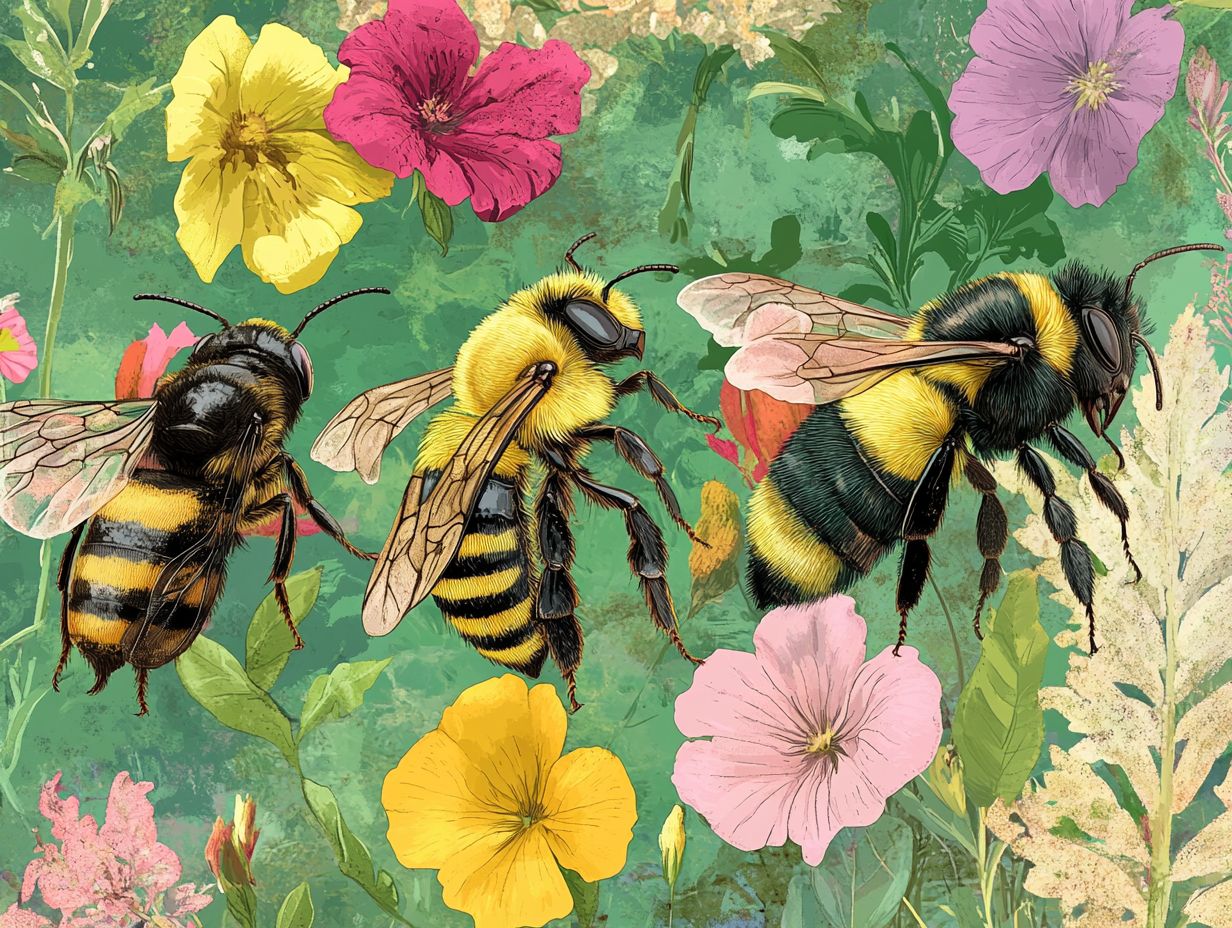
- Wallace’s Giant Bee is the world’s largest bee species, with a wingspan of up to 2.5 inches, showing the amazing variety within bee families.
- The Blue Carpenter Bee is known for its vibrant blue coloring and important role in pollination, especially in tropical regions.
- Orchid Bees collect and use fragrant oils from orchid flowers, making them vital pollinators for various orchid species and showcasing their unique behavior.
1. Wallace’s Giant Bee
Wallace’s Giant Bee, renowned as the world’s largest bee species, is a captivating testament to biodiversity. This bee shows the remarkable variety of bee families that serve as vital pollinators across diverse habitats, significantly contributing to flower pollination.
Native to Indonesia, this extraordinary bee possesses distinct traits that set it apart from other insect species. Its impressive size and unique behavior patterns fascinate both bee experts and enthusiasts alike.
Measuring up to 4 centimeters in length, this magnificent insect has a wingspan that can approach nearly 10 centimeters, making its sheer size a striking characteristic. It’s an example of remarkable bee anatomy and evolution over time.
Its large mandibles, adept at nesting in tree hollows, distinguish it from many of its smaller relatives.
Wallace’s Giant Bee plays a crucial role in pollinating various flowering plants, which is essential for sustaining the delicate balance of nature.
This bee highlights the urgent need for conservation efforts to save our bees, as it faces pressing challenges like habitat loss and pesticide threats that imperil our natural world.
Fascinating facts about bees, such as their ability to communicate through intricate dances and their complex social structures, underscore the significance of these creatures and the urgent need to safeguard their existence through comprehensive bee conservation programs.
2. Blue Carpenter Bee
The Blue Carpenter Bee stands out as a remarkable insect species, characterized by its striking blue coloration and its vital role as a pollinator.
You can appreciate how this bee significantly contributes to the health of various ecosystems through its foraging habits and nesting behavior.
With a robust and larger physique compared to many other bees, the Blue Carpenter Bee is unmistakable in the wild. Its unique anatomy aids in its distinctive foraging and nesting behavior.
These bees prefer nesting in pre-existing tunnels, particularly in wood, positioning them as essential players in their environments.
When foraging, you’ll find them displaying fascinating behavior, often gravitating toward flowers like lavender and blueberry, which provide both nectar and pollen.
As they flit from plant to plant, they perform a crucial function in the reproduction of flowering plants, enhancing biodiversity and supporting healthy growth and food production.
Their interactions with flora not only facilitate their life cycle but also bolster the resilience of the entire ecosystem.
3. Orchid Bee
Orchid bees, with their striking colors and captivating behaviors, are truly captivating and essential. They are essential pollinators known for their specialized relationships with orchid flowers and their contributions to bee diversity.
These connections highlight the intricate web of interactions within ecosystems that support a diverse array of bee populations.
You will find their ability to detect specific floral scents remarkable, which draws them to particular types of orchids. This facilitates the transfer of pollen between species and demonstrates key bee interactions.
The male orchid bees stand out with their intriguing courtship rituals, where they gather aromatic compounds from various sources to charm potential mates.
As they progress through their lifecycle, these bees undergo complete metamorphosis, a process where they develop from eggs into adult bees. Each stage is uniquely adapted to thrive in their environment, showcasing fascinating aspects of the bee life cycle and bee evolution.
Their role as key pollinators not only boosts the reproductive success of orchids but also plays a critical part in enhancing the overall health and biodiversity of their natural habitats. In essence, they are critical in maintaining balance in nature.
4. Metallic Sweat Bee
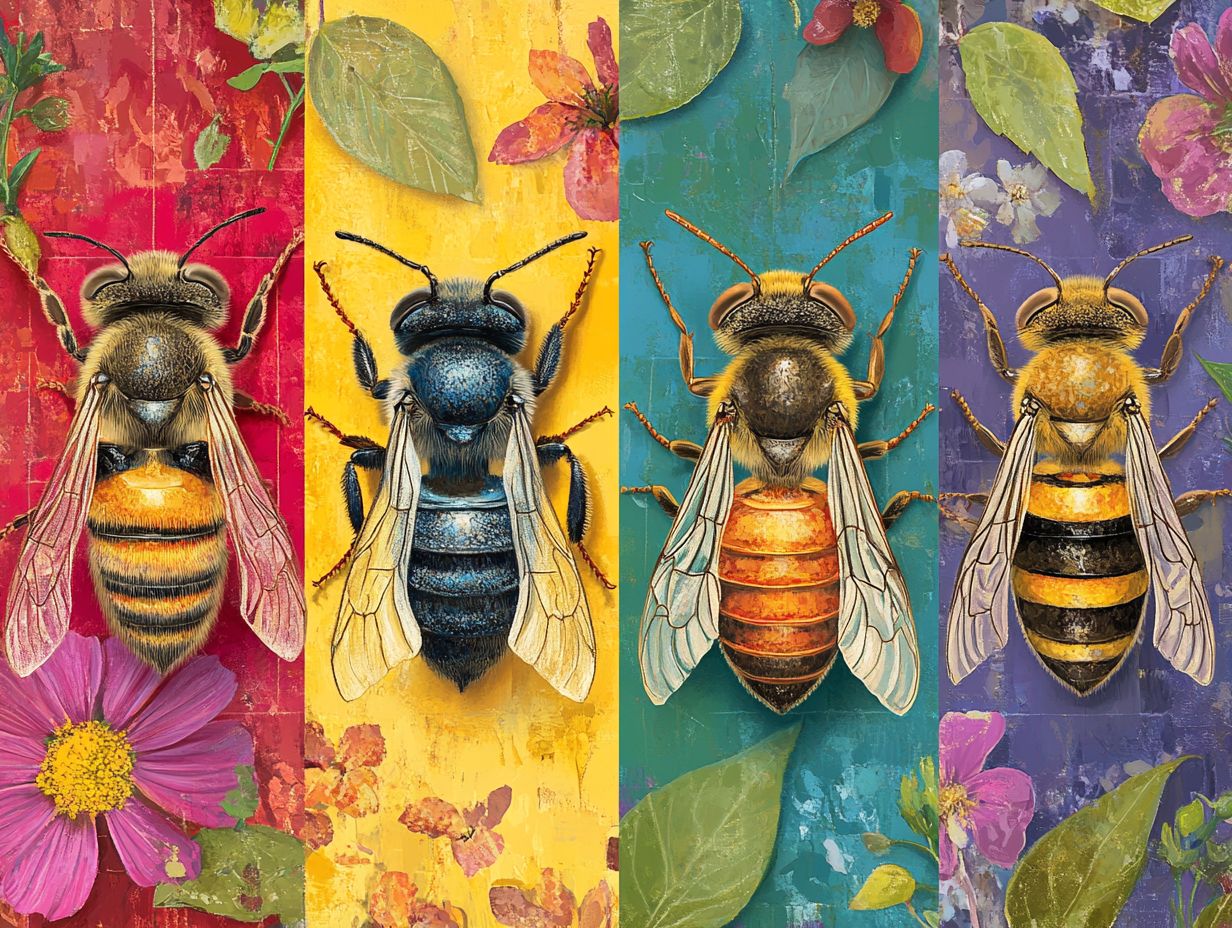
The Metallic Sweat Bee, with its stunning iridescent sheen, represents a fascinating array of bee species that are not just eye-catching but also vital pollinators involved in the pollination process.
By effectively foraging and nesting, these bees play a crucial role in maintaining balance in nature and the overall health of their habitats.
You ll find that these bees have some rather intriguing nesting preferences, including establishing bee nests in bare soil or small cavities.
They often opt for bare soil or small cavities to establish their colonies, whether in solitary habitats or more communal settings.
Their foraging habits are equally captivating, as they are attracted to a diverse range of flowers, especially those rich in pollen and nectar, showcasing their critical role in flower pollination.
This not only ensures their survival but also significantly boosts the reproduction of flowering plants, enhancing local biodiversity in the process.
Their specialized anatomy is fascinating and designed for efficient foraging and nesting.
With unique mouthparts tailored for extracting pollen and a segmented body structure that allows for agile flight, these bees are perfectly equipped to fulfill their essential role in pollination, fostering cohesive ecosystems wherever they go.
5. Bumblebee Bat
The Bumblebee Bat, despite not being a true bee, captivates with its name derived from these remarkable pollinators and their critical ecological roles.
Its tiny size and unique adaptations serve as a testament to the incredible diversity of species occupying similar ecological niches and their interconnected roles in sustaining biodiversity.
While the Bumblebee Bat primarily dines on insects especially mosquitoes and other small flying critters true bees are celebrated for their vital role in pollination, including honey production and supporting food production.
Both the bat and the bees possess specialized adaptations that enable them to thrive in their respective environments, showcasing the vast array of bee behavior and anatomy. For instance, the bat has developed a high metabolic rate crucial for its nocturnal lifestyle, while bees showcase intricate behaviors that enhance efficient foraging and hive maintenance, including bee communication and hive construction.
The relationship between the Bumblebee Bat and native bee populations presents a fascinating dynamic, often observed in bee behavior studies.
They often inhabit the same areas but fulfill different ecological roles. Preserving this biodiversity is essential for maintaining balance in nature; the loss of one species can have far-reaching consequences, disrupting the delicate web of life that they collectively support.
Why Are These Bee Species Not Well-Known?
Many bee species, including the remarkable Wallace’s Giant Bee and the industrious Blue Carpenter Bee, are still largely unknown for various reasons. They make significant contributions to pollination and bee diversity.
Factors such as limited research funding, a lack of public awareness, and the elusive nature of certain species create significant challenges for bee conservation efforts. These challenges aim to protect these vital pollinators and preserve biodiversity.
The scarcity of targeted studies and insufficient media coverage means that countless individuals are unaware of the critical roles these bees play in ecosystems and agriculture, as highlighted in bee reports and entomology studies.
Public education initiatives often neglect the significance of lesser-known species, instead focusing primarily on more charismatic wildlife. This oversight can severely undermine conservation efforts, as funding and resources typically funnel toward the more visible members of the animal kingdom.
This neglect has serious implications, threatening the survival of these insect species and the stability of entire ecosystems. It is crucial to raise awareness about the many threats these bees face such as habitat loss, climate change, and pesticide exposure to foster support for comprehensive conservation programs that encompass all bee species.
What Makes These Bee Species Unique?
Lesser-known bee species are truly unique! Their remarkable adaptations, behaviors, and ecological roles contribute to the rich tapestry of biodiversity worldwide.
Take Wallace’s Giant Bee, for instance. Its impressive size and nesting habits in tree hollows offer protection from predators and the elements, showcasing unique bee nests and adaptations.
This impressive species has evolved powerful mandibles, allowing it to access resin for nest construction with remarkable efficiency.
Conversely, the Blue Carpenter Bee showcases an equally compelling assortment of traits. It contributes to the decomposition of dead trees and plays a role in creating bee habitats.
It tunnels into wood, using its robust body to effortlessly drill through tough bark, thereby creating ideal nesting sites while also contributing to the decomposition of dead trees.
Both of these bee species employ sophisticated foraging techniques, frequently visiting specific flowers that offer optimal nectar and pollen. This behavior is crucial as it plays a vital role in pollination.
Their unique anatomical and behavioral adaptations not only embody their evolutionary journey but also underscore their essential ecological role in maintaining balance within their respective habitats.
How Do These Bee Species Contribute to the Ecosystem?
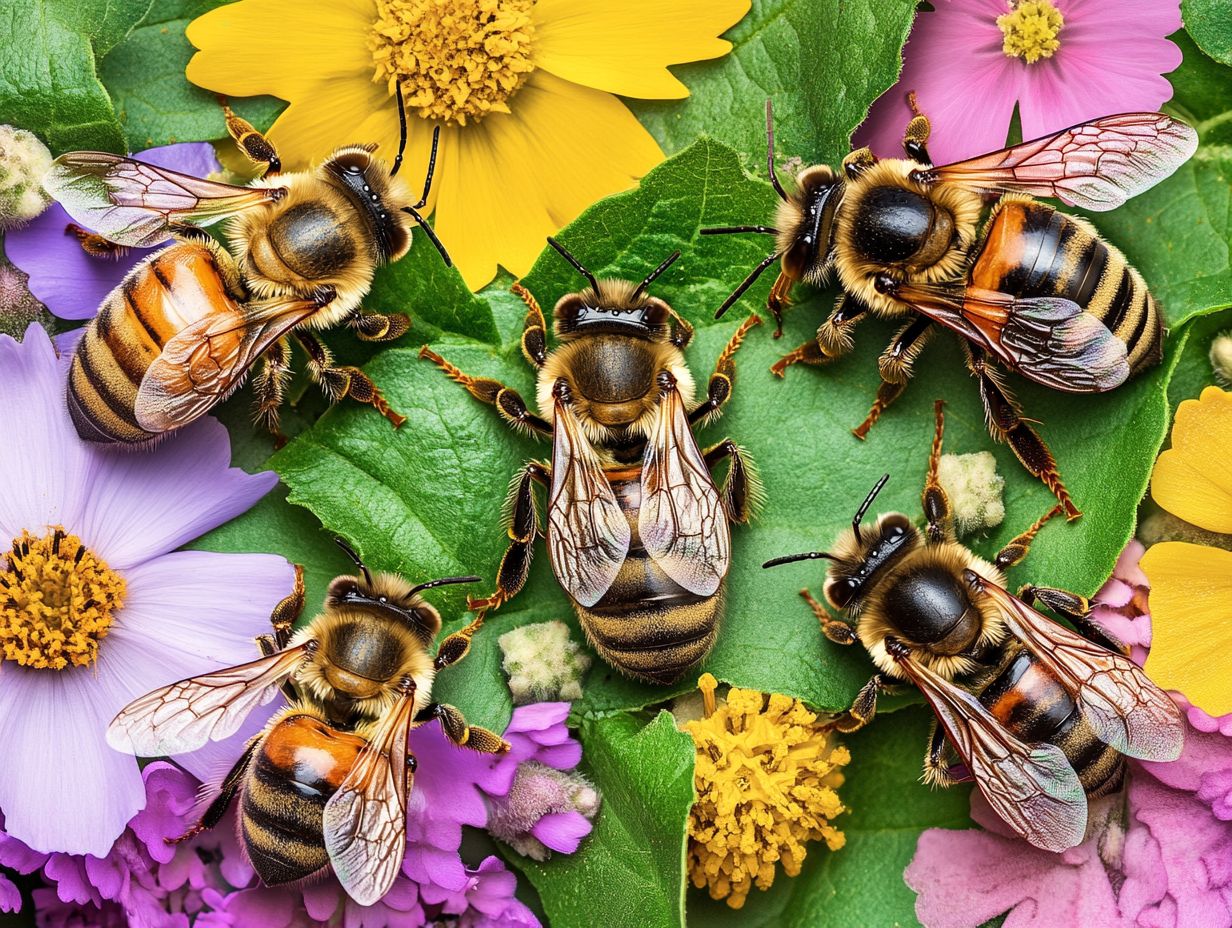
These lesser-known bee species are essential players in the ecosystem, primarily through their vital contributions to the pollination process. This process is crucial for the reproduction of many flowering plants and, in turn, the maintenance of biodiversity.
Research has shown that these bees are particularly efficient pollinators for specific crops, enhancing both yields and quality. For example, solitary bee species have been found to outperform honeybees in pollinating certain plants, such as blueberries and cranberries.
Their distinctive foraging behaviors often facilitate cross-pollination, which helps plants produce seeds and is key to fostering genetic diversity within plant populations. Bee experts have noted that specific species, like the tiny bee, are highly specialized pollinators.
The interdependence between these bees and flowering plants is integral to sustaining various natural ecosystems. Healthy plant communities support other wildlife, including birds and mammals.
This intricate web of interactions underscores the importance of conserving lesser-known bee species, including native bees, to ensure the overall health of our environment and biodiversity.
What Threats Do These Bee Species Face?
You face a pressing challenge with various threats jeopardizing the survival of lesser-known bee species. Habitat loss, pesticide exposure, and climate change underscore the urgent need for effective bee conservation strategies that protect biodiversity and ensure the stability of bee populations.
Numerous studies have documented the alarming decline of these vital pollinators. Nearly 30% of North American bee species are experiencing population decreases. Urbanization and agricultural expansion have severely fragmented their habitats, diminishing the availability of essential flowering plants they rely on for foraging. Exposure to neonicotinoids, a group of pesticides that affect bees, has been linked to impaired foraging behavior and reduced reproductive success across multiple species. Bee experts have highlighted the need for immediate action.
Climate change alters the availability of flowers over time, impacting the timing of seasonal activities. Without immediate intervention and dedicated conservation efforts, the ecological roles these bees play such as pollinating crops and wild plants could be severely compromised. This could result in broader consequences for ecosystems that depend on their invaluable services. Bee colonies and habitats are at risk, necessitating urgent attention.
How Can We Help Protect These Bee Species?
To safeguard lesser-known bee species and enhance biodiversity, you and your community can engage in a variety of conservation efforts. Consider creating bee-friendly habitats, supporting local bee programs, and advocating against harmful pesticides that threaten these essential pollinators. Engaging in bee photography can also help raise awareness about their importance.
Incorporating native flowers into your gardens is a simple yet impactful way to provide vital food sources for these important insects. This action also nurtures local ecosystems. Reducing pesticide usage is paramount; by choosing organic practices, you can cultivate healthier environments for both plants and pollinators alike. Studies on bee communication and behavior show that these practices significantly benefit bee populations.
You might also explore collaboration opportunities with local organizations dedicated to bee conservation. Many of these groups run successful initiatives focused on habitat restoration and raising awareness about the crucial role bees play in our ecosystem. By participating in community workshops or awareness campaigns, you can amplify the message, ensuring these unique species remain protected for generations to come. Institutions like the Museum of Natural History and organizations like Global Wildlife Conservation are excellent resources for learning and collaboration.
What Can We Learn from These Lesser-Known Bee Species?
Studying lesser-known bee species can provide valuable insights into the intricate dynamics of ecosystems. These bees reveal essential facts about biodiversity, pollination strategies the ways in which bees help plants reproduce and the ecological roles they fulfill in their environments. Bee behavior studies and species identification are crucial for understanding these dynamics.
Through thorough research, scientists have uncovered fascinating behaviors, such as nesting preferences, foraging patterns, and social interactions these bees exhibit. All of these contribute to their unique ecological niches. These findings underscore the critical role that lesser-known bee species play in maintaining plant diversity and overall ecosystem health. Research from institutions like Princeton University and insights from bee experts highlight these critical roles.
Ongoing studies tracking these species across various habitats illuminate their interactions with other organisms, including plants and predators. They also highlight how the decline of these bees could disrupt ecological balance. The implications for conservation are significant, suggesting that protecting these bees is not merely about saving a species; it is about preserving the intricate web of life that sustains our environment. Studies in bee evolution and entomology are vital in this regard.
Frequently Asked Questions
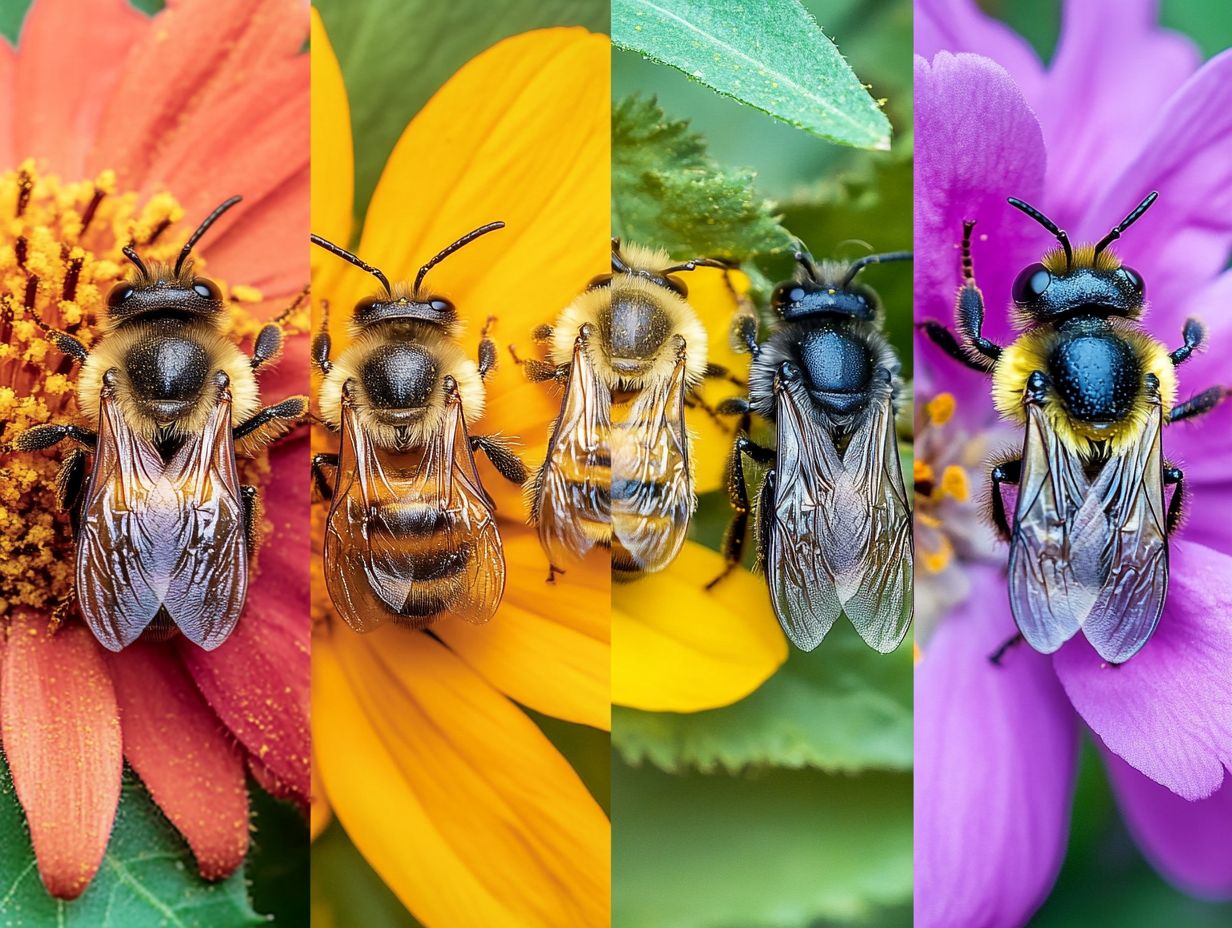
Answered by bee expert Noah Wilson-Rich from USGS.
1. What are some bee species that most people are not familiar with?
Some lesser-known bee species include Bombus hortorum, Euglossa dilemma, Tetragonula carbonaria, Osmia avosetta, and Sphecodes gibbus. Wallace s Giant Bee and Perdita Minima are also fascinating examples of bee diversity, showcasing extreme size differences.
2. How many bee species are there in the world?
There are roughly 20,000 known species of bees, and it is estimated that there could be as many as 30,000 bee species in total.
3. What makes the Bombus hortorum bee species unique?
The Bombus hortorum, or garden bumblebee, is one of the largest bumblebee species. Its long tongue helps it access nectar deep within flowers, making it an efficient pollinator and vital for honey production.
4. Where can the Euglossa dilemma bee species be found?
The Euglossa dilemma bee species is native to Central and South America, with populations in countries such as Brazil, Mexico, and Costa Rica. They are often studied in the study of insects for their unique pollination habits.
5. Are the Tetragonula carbonaria bees important pollinators?
Yes, the Tetragonula carbonaria, also known as the sugarbag bee, is essential for maintaining the biodiversity of native Australian plants. Without them, our native flora would struggle to survive!
6. What is unique about the Osmia avosetta bee species?
The Osmia avosetta, also called the hornfaced bee, has unique horn-like projections on its face. These help it dig nests in the ground and exhibit fascinating nesting behaviors, making it a subject of interest in bee anatomy and behavior studies.

